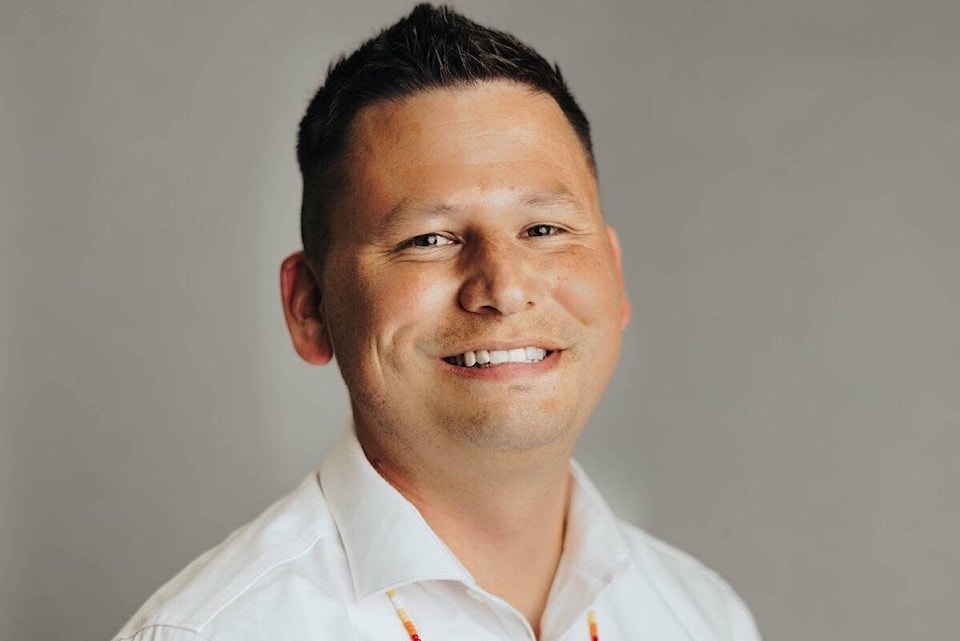The Sinixt Confederacy is protesting B.C.’s decision to exclude them from Columbia River Treaty funding granted to three Indigenous nations.
“It is very upsetting,” said Jarred-Michael Erickson said in an interview, “knowing that it’s been two-and-a-half years since the the Desautel decision was handed down from the Supreme Court of Canada, to hear that (the provincial government) hadn’t even consulted us or even spoken to us.”
Erickson is chair of the Sinixt (Arrow Lakes) Confederacy and of the Washington State-based Colville Confederated Tribes, of which the Sinixt are a part.
The Supreme Court of Canada, in the 2021 Desautel decision, ruled the Sinixt, regardless of the fact that most of them currently live in Washington State, are Indigenous peoples of Canada as defined by the Constitution of Canada.
On June 8, the B.C. government announced that it intends to contribute about $6 million annually for four years to three groups: the Ktunaxa, Secwépemc and Syilx Okanagan Nations. This amounts to five per cent of the approximately $120 million the U.S. government pays to the B.C. government under the Columbia River Treaty (CRT), which was signed by Canada and the U.S. in 1964 as a water-sharing agreement to provide flood-control management and power generation in the Columbia Basin.
“The Sinixt continue to be on the outside looking in,” Erickson said, “while we watch other Nations receive financial payouts for impacts occurring predominantly in our territory.”
The annual payments from the U.S. to the province are known as the Canadian Entitlement, and are meant as compensation to Canada for the benefits received by the U.S. and the harms suffered by Canada from hydro dams on the Columbia River system in Canada.
The treaty was negotiated with no consideration of its impacts on Indigenous people, but representatives of the Ktunaxa, Secwépemc and Syilx Okanagan Nations are now members of the Canadian team as the CRT is being re-negotiated.
In 1956 the federal government declared the Sinixt people were extinct in Canada. But R. v Desautel, while it did not reverse the government’s extinction declaration, opened up the possibility that the Sinixt have the right to be consulted by governments and industry about proposed activities and changes on their traditional territory, including such things as forest licences, mines, dams and recreation tenures.
“Obviously we have an interest there,” Erickson said. “So (the news of the payments to the Ktunaxa, Secwépemc and Syilx Okanagan Nations) was very, very hard to hear.”
Erickson suggested the Sinixt might have to go to court if the government refuses to come to the table to discuss the impacts of the dams on the Sinixt in Canada.
“The Sinixt are still here, and always will be,” he said in a news release. “If we don’t see immediate action, we will return to court. Change will come, one way or the other.”
Erickson said maps the Supreme Court of Canada accepted as evidence show the territory primarily occupied by the Sinixt was the area from south of the border near Kettle Falls, Wash., north through the West Kootenay to the Revelstoke area.
The B.C. government’s response
Asked why the province did not include the Sinixt in the CRT payments, Murray Rankin, B.C.’s Minister of Indigenous Relations and Reconciliation, said in an email that the Sinixt are part of the U.S. treaty negotiation team on the CRT because they are part of a U.S.-based group.
But Erickson says most of the impacts from the dams are on Sinixt territory in Canada, including ecological and archeological impacts. He said negotiators for the U.S. government are unlikely to be concerned about this, so the Sinixt need representation north of the border.
“It is well documented that 80-to-90 per cent of our archaeology, including multiple village sites and grave sites, were inundated by the various dams along the Columbia River system, without any effort of relocation or even consultation with the Sinixt,” Erickson said. “To this day, our ancestors continue to be uncovered without acknowledgement of that history, and a steadfast refusal to let us take the lead in their repatriation.”
He said the province should welcome Sinixt involvement because they have considerable experience and expertise in managing and mitigating similar issues in Lake Roosevelt behind the Grand Coulee Dam in Washington State.
Erickson, who is a fisheries biologist by profession, said he shares the concern of local B.C. residents about the impacts of recent low water levels in the Arrow Lakes and he would like to see the Sinixt granted some input into the regulation of water levels.
“The ramifications of raising and lowering water levels include a broad range of ecosystem impacts, ranging from fish kills and stranding, preventing access to spawning streams for Kokanee, and changes in water temperature and predation issues,” he said.
READ MORE:
• Agreement reached to share Columbia River Treaty revenues with First Nations
• Columbia River Treaty benefit-sharing agreement ‘significant’ to Ktunaxa
• ‘We’re still here’: Sinixt return to Nelson to celebrate anniversary of Supreme Court victory
• PHOTOS: Sinixt visit Nelson during canoe tour
• B.C. to be first to implement UN Indigenous rights declaration
